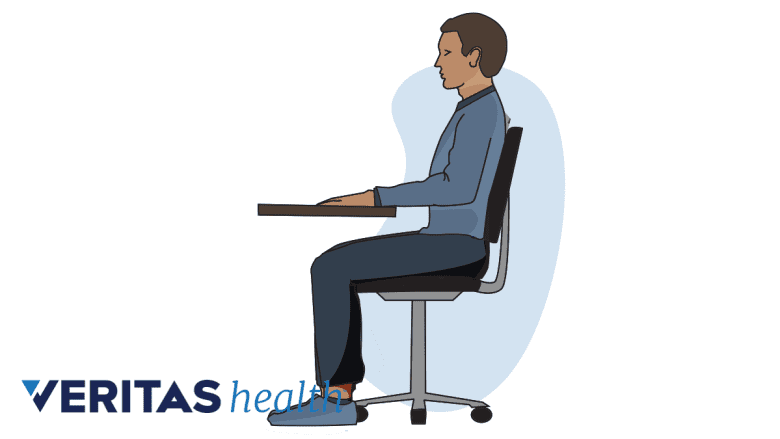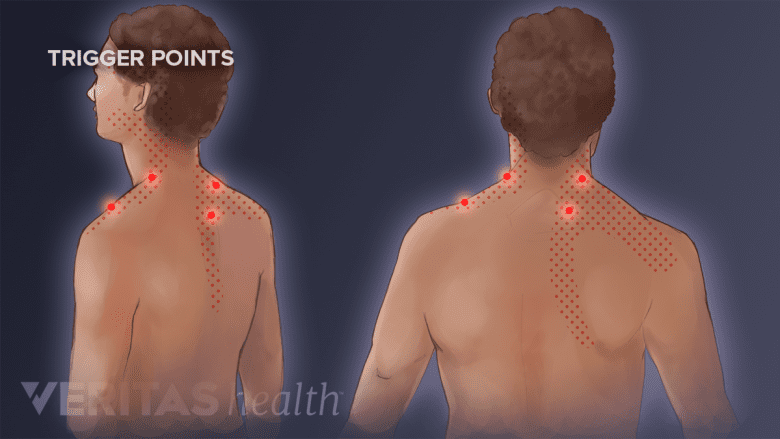Most cervical osteophytes, or bone spurs in the neck, have no symptoms and thus require no treatment. However, if bone spurs become symptomatic, numerous treatment options are available. Typically, non-surgical treatment options will be tried first.
In rare cases when non-surgical treatments are not working or symptoms are getting worse, then surgery might be considered as a last resort.
In This Article:
- Cervical Osteophytes: Bone Spurs in the Neck
- Cervical Osteophytes: Symptoms and Diagnosis
- Cervical Osteophytes: Treatment Options
- Cervical Bone Spurs Symptoms and Causes Animation
Non-Surgical Treatments
Treatment options for symptomatic bone spurs in the neck could include:
Activity modification

A supported posture minimizes muscle strain and supports the spine's alignment.
Perhaps a day or two of rest, or limiting strenuous activities, could help. Other possibilities might include using better posture. For example, hunching over a desk 8 hours a day could be exacerbating the problem, so sitting up straighter—and taking more frequent breaks—may relieve symptoms.
Physical therapy
A physical therapist or other qualified health professional can design an exercise and stretching routine to help the patient improve neck strength and flexibility, which oftentimes can reduce pain. Most treatment programs for neck pain require some type of physical therapy or home exercises.
See Physical Therapy for Neck Pain Relief
Ice and/or heat therapy

Ice and heat therapy may provide pain relief from neck pain.
Cooling or warming the neck area, such as with an ice pack or heated gel pack, may help reduce pain for some people. Other options for heat therapy could include taking a warm shower or using an electric blanket.
Medications or injections

Prescription medications may reduce neck pain in the short term.
Sometimes medication, such as anti-inflammatory medications or muscle relaxant pain medications, can offer relief. However, a doctor will likely want to reassess the patient within 4 to 6 weeks of having started the medications. Also, if medications and other treatments do not provide enough relief, a health professional may use an injection that delivers medication directly near the problematic bone spur to help reduce inflammation and/or block pain signals from reaching the brain.
See Medications for Back Pain and Neck Pain
Manual manipulation

Manual manipulation aims to improve mobility and reduce stiffness in the neck.
A chiropractor, osteopathic physician, or other qualified health professional can manually adjust the cervical spine in an effort to reduce pain and/or improve mobility. Sometimes manual manipulation is part of a physical therapy program.
See Chiropractic Manipulation for the Cervical Spine
Several other options could also be considered for relieving symptoms of cervical osteophytes. As a few more examples, some people report pain relief from massage, acupuncture, and/or traction.
Bone Spurs Rarely Require Neck Surgery
If symptoms of cervical radiculopathy (nerve root compression in the neck) or cervical myelopathy (spinal cord compression in the neck) continue to progress despite non-surgical treatments, then surgery may be considered to preserve nerve and/or spinal cord health.
See Cervical Myelopathy Treatment
For a cervical nerve root compression, a likely surgical option could be anterior cervical discectomy and fusion (ACDF). If instead the spinal cord is being compressed, then some type of spinal cord decompression surgery will be performed, such as anterior cervical corpectomy or posterior cervical laminectomy.

